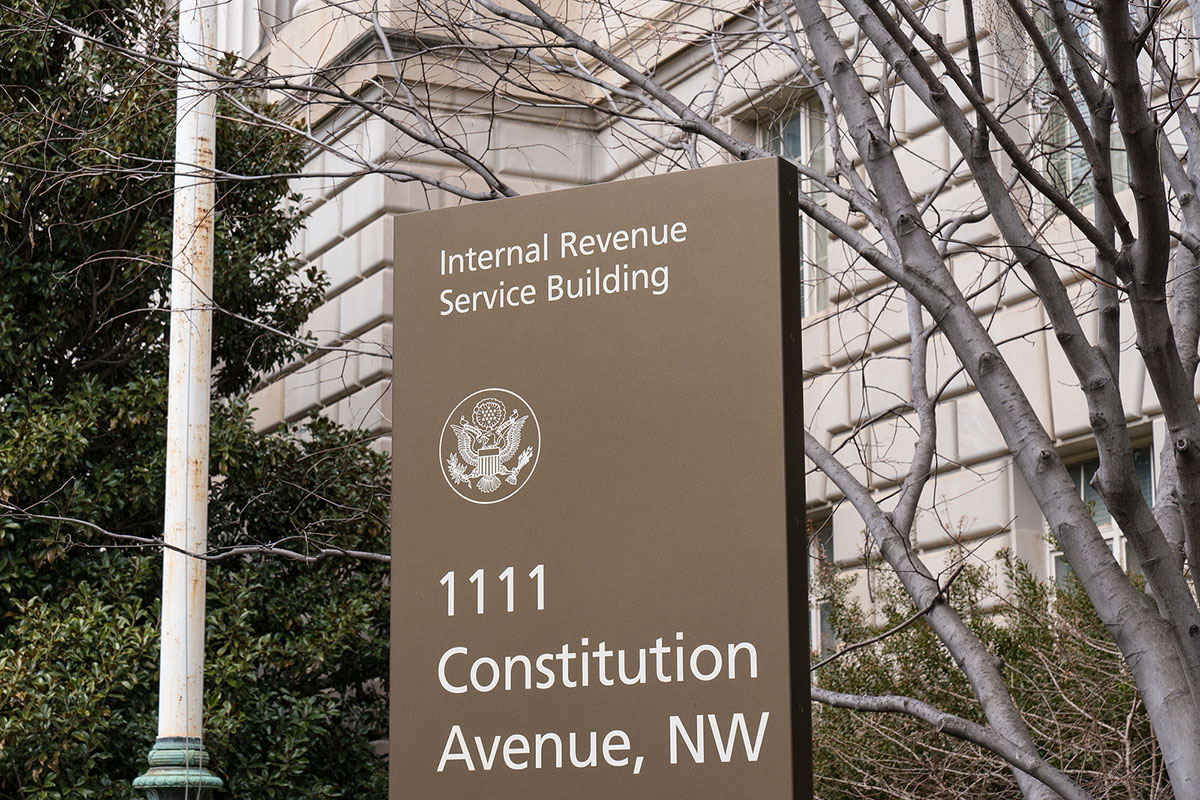
Summertime offers unique tax and money saving opportunities for the whole family.
In this month’s newsletter, find out how day camps for your kids may be tax deductible, if you know the rules!
Also read about shielding your emergency fund from inflation and why you should always turn to a trusted tax professional if you receive a letter from the IRS.

Upcoming Dates
June 15
– Second quarter 2023 estimated tax payments are due
Shield Your Emergency Fund From Inflation
 Most financial experts suggest keeping three to six months worth of household expenses in savings to help in case of emergency. But with record inflation, that task just got a lot harder to accomplish as virtually every safe place to put your emergency funds will not provide interest rates that keep pace with inflation. But that does not mean you cannot increase the rate of return on these funds.
Most financial experts suggest keeping three to six months worth of household expenses in savings to help in case of emergency. But with record inflation, that task just got a lot harder to accomplish as virtually every safe place to put your emergency funds will not provide interest rates that keep pace with inflation. But that does not mean you cannot increase the rate of return on these funds.
Here are some ideas to reduce the impact of inflation on your emergency funds.
Actively monitor your savings account rate.
An interest rate hike by the Federal Reserve may not instantly change the rate on your current savings account, but it could lead to a higher rate for other accounts offered by your current bank or other banks.
What you need to know: If your bank is slow to raise your savings rate, be willing to monitor and shift funds to a bank that does. Just make sure the funds are still FDIC insured and are kept at a reputable bank.
Take a look at Series I Savings Bonds.
Series I Savings bonds are issued and backed by the U.S. government and feature two interest rate components: a fixed rate and an inflation rate. The fixed rate is set when the bond is issued and never changes during the life of the bond. The inflation rate resets semi-annually based on the Consumer Price Index.
What you need to know: You must hold an I bond for at least 12 months before redeeming it. And although you can redeem it after one year, you’ll have to pay a penalty worth the interest of the previous three months if you redeem the bond within five years. And remember, you must be prepared to pay the penalty if you need the funds for an emergency.
Creative use of Roth IRA funds in an emergency.
Roth IRAs are funded with after-tax dollars. Because of this, early removal of the initial contribution is tax and penalty free. If you dip into the earnings, however, you will not only be subject to income tax, but also may be subject to a 10% early withdrawal penalty.
What you need to know: Use of a Roth IRA is often a creative way to fund your emergency account while achieving higher returns with conservative investment choices, but it is not for the faint of heart. If you get this one wrong, it could cost you in taxes, penalties and lost fund value in a bear market. Prior to removing funds from any IRA, it makes sense to conduct a tax planning session.
Higher rates are out there, you just need to be aware and willing to actively manage your emergency funds to ensure you are attacking the risk of inflation.
Make Your Child’s Summer Break a Tax Break!

As a busy working parent, you may be on the lookout for activities that are available for your kids this summer. There may be a solution that’s also a tax break: Summer camp!
Using the Child and Dependent Care Credit, you can be reimbursed for part of the cost of enrolling your child in a day camp.
Am I eligible?
- You, and your spouse if you are married, must both be working.
- Your child must be under age 13, your legal dependent, and live in your residence for more than half the year.
Tip: If your spouse doesn’t work but is either a full-time student, or is disabled and incapable of self-care, you can still qualify for the credit.
How much can I save?
For 2023, you can claim a maximum credit of $1,050 on up to $3,000 in expenses for one child, or $2,100 on up to $6,000 in expenses for two or more children.
What kind of camps?
The only rule is: no overnight camps.
The credit is designed to help working people care for their kids during the work day, so summer camps where kids stay overnight aren’t eligible for this credit.
Other than that, it doesn’t matter what kind of camp: soccer camp, chess camp, summer school or even day care. All of these are eligible expenses for this credit.
Other ways to use this credit
While summer day camp costs are a common way to use this credit, any cost to provide care for your children while you are working may be eligible.
For example, you can use this credit to pay a qualified day care center, a housekeeper or a babysitter to take care of your child while you are working. You can even pay a relative to care for your child and claim the credit for that expense, as long as the relative isn’t your dependent, minor child or spouse.
This is just one of many possible tax breaks related to children and dependents. Please call if you have questions about this credit, or if you’d like to discuss any other tax savings ideas.
Never Take on the IRS Alone! 
Sleuthing your way through a tax audit by yourself is not the same as fixing a leaky faucet or changing your oil. Here are reasons you should seek professional help as soon as you receive a letter from the IRS:
IRS auditors do this for a living — you don’t.
Seasoned IRS agents have seen your situation many times and know the rules better than you. Even worse, they are under no obligation to teach you the rules. Just like a defendant needs the help of a lawyer in court, you need someone in your corner that knows your rights and understands the correct tax code to apply in correspondence with the IRS.
Insufficient records will cost you.
When selected for an audit, the IRS will typically make a written request for specific documents they want to see. The list may include receipts, bills, legal documents, loan agreements and other records. If you are missing something from the list, things get dicey. It may be possible to reconstruct some of your records, but you might have to rely on a good explanation to avoid additional taxes plus a possible 20 percent negligence penalty.
Too much information can add audit risk.
While most audits are limited in scope, the IRS agent has the authority to increase that scope based on what they find in their original analysis. That means that if they find a document or hear something you say that sounds suspicious, they can extend the audit to additional areas. Being prepared with the proper support and concise, smart answers to their questions is the best approach to limiting further audit risk.
Missing an audit deadline can lead to trouble.
When you receive the original audit request, it will include a response deadline (typically 30 days). If you miss the deadline, the IRS will change your tax return using their interpretation of findings, not yours. This typically means assessing new taxes, interest and penalties. If you wish your point of view to be heard — get help right away to prepare a plan and manage the IRS deadlines.
Relying on an expert gives you peace of mind.
Tax audits are never fun, but they don’t have to be pull-your-hair-out stressful. Together, we can map out a plan and take it step-by-step to ensure the best possible outcome. You’ll rest easy knowing your audit situation is being handled by someone with the proper expertise that also has your best interests in mind.

Get More Money for School by Understanding These Scholarship Myths
There’s plenty of money available for you to pursue a post-secondary education for either you or your child! Here are several myths that could be getting in the way of securing money to pay for school.
Common misconceptions
Scholarships are only for top scholars and athletes. Many news stories are about high-profile students who snag a fully-paid-for scholarship. There are an unbelievable number of scholarships, however, that do not take grades or athletic ability into consideration.
Scholarships are only for students attending college. Enrollment in vocational and trade schools has nearly doubled since 2000, according to the National Center for Education Statistics. And the good news for prospective students is that scholarships for vocational and trade schools are just as plentiful as scholarships for four-year colleges and universities.
You have to be a great writer. Winning scholarships is more often about what you write than how you write. And for some scholarships, following the application’s directions and answering the questions that are asked is more important than how well you write.
You have to be a high school student. Scholarships aren’t just for soon-to-be high school graduates. Many schools have degree programs – and corresponding scholarships – aimed at older adults who are looking to learn new skills or make a transition in their career. Scholarships are also available for graduate students.
Finding scholarships takes too much time. Yes, you’ll need to invest a certain amount of time to find and apply for scholarships, but finding financial aid may not require as much of a time investment as you may think with tons of available online tools.
What to do
Follow the directions! You’d be surprised how many applicants don’t read or follow the rules of the scholarships. Take the time to read through all instructions, and thoughtfully answer the questions that are asked.
Apply every year by January. For every year that you’re attending a post-secondary school, consider setting aside some time in the fall and early winter to complete scholarship applications for the upcoming school year. Many applications need to be completed by January for the following school year.
Ask your school. Nearly every college in the U.S. offers some form of merit-based financial aid. You’ll likely need to complete the Free Application for Federal Student Aid (FAFSA), as many colleges have all students apply for scholarships by completing the FAFSA. This includes students who may qualify for only merit-based scholarships.
Ask local businesses. Many local businesses, civic groups, foundations, and religious or community organizations offer scholarships. So ask around in your community about available financial aid.
The early bird often gets the worm, but the bird that does not go looking for one will never get one!




 A big jump in cost-of-living calculations means a big jump in how much you can contribute to retirement accounts in 2023! Now is the time to plan your retirement contributions to take full advantage of this tax benefit. Here are annual contribution limits for several of the more popular retirement plans:
A big jump in cost-of-living calculations means a big jump in how much you can contribute to retirement accounts in 2023! Now is the time to plan your retirement contributions to take full advantage of this tax benefit. Here are annual contribution limits for several of the more popular retirement plans:










 With supply chain snarls still plaguing parts of the U.S. economy, many consumers are turning to gift cards as the holiday present of choice this year. In fact, according to the website Research and Markets, the United States gift card industry is expected to reach $188 billion in 2022.
With supply chain snarls still plaguing parts of the U.S. economy, many consumers are turning to gift cards as the holiday present of choice this year. In fact, according to the website Research and Markets, the United States gift card industry is expected to reach $188 billion in 2022.









 Paying bills is inevitable, but paying too much is not. Here are some tips to help you get a handle on your recurring monthly expenses.
Paying bills is inevitable, but paying too much is not. Here are some tips to help you get a handle on your recurring monthly expenses.


 5 Great Things to Know about IRAs
5 Great Things to Know about IRAs





 The IRS Announces Tax Scams
The IRS Announces Tax Scams











